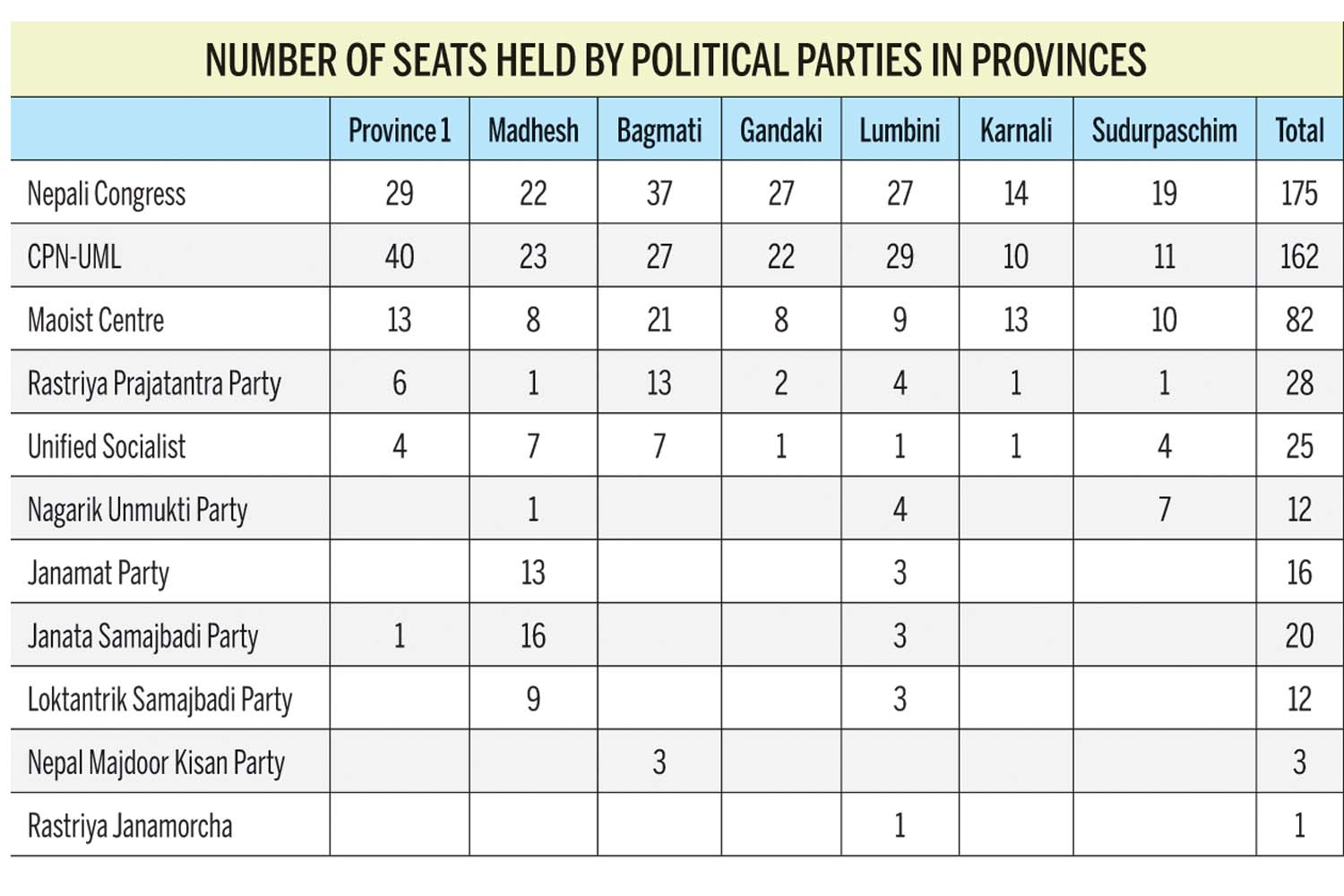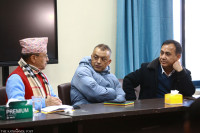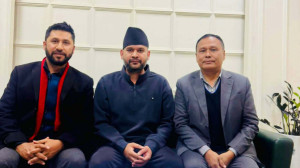Politics
All eyes will be on provincial governments post presidential elections
Power equations in the centre and provinces are likely to change after the election of head of state.
Nishan Khatiwada
The formation of a new eight-party alliance in the run-up to the presidential polls has created ripples in national politics—from the centre to the provinces. The current ruling coalition seems to be on a brink of collapse after the Maoist Centre decided to side with the Nepali Congress for the presidential elections.
Nepali Congress senior leader Ram Chandra Paudel and CPN-UML vice-chair Subas Nembang filed their candidacies for the head of the state on Saturday. They both have previously served as Speaker of the House of Representatives.
UML has not withdrawn its support from the government yet. But the Rastriya Prajatantra Party, which was close to the UML, has already pulled out of the government at the centre and in Bagmati Province as well. Its four ministers resigned from the Cabinet on Saturday. Bagmati Province minister Uddhav Thapa also stepped down the same day.
Rastriya Prajatantra Party Spokesperson Mohan Shrestha said they will gradually back out of other provincial governments as well. “As per Saturday’s decision, we have pulled out of the Bagmati provincial government, and will do the same in other provinces, analysing the situation and the internal power arithmetics at the right time.”
Recent political developments hint at a new power equation emerging at the centre and in the provinces. The three parties—Nepali Congress, Maoist Centre and Unified Socialist—have already reached an informal agreement to head the central government by turns, according to some leaders of the new alliance.
It has been agreed that Maoist Centre will lead the government for the first two years, according to a senior Unified Socialist leader. The first half of the next three years will be led by the Unified Socialist; the Congress will then lead the government until the next parliamentary elections.
The eight-party alliance that backed Paudel as a presidential candidate includes the Congress, Maoist Centre, Janata Samajbadi Party, CPN (Unified Socialist), Janamat Party, Loktantrik Samajbadi Party, Nagarik Unmukti Party and Rastriya Janamorcha.
Of the seven provinces, CPN-UML is currently leading the government in Province 1, Gandaki and Lumbini provinces. The Madhesh provincial government is headed by the Janata Samajbadi and the Maoist Centre is leading in Karnali and Bagmati. The Sudurpaschim provincial government is now under the leadership of Nepali Congress. Newly-elected Chief Minister Kamal Bahadur Shah is yet to take the vote of confidence. The formation of the new eight-party alliance has now made the floor test easier to win for him.
If the eight-party alliance bands together to form provincial governments, UML’s governments in the three provinces will collapse. The new political scenario will trigger a new power equation in all the provinces and at the centre, some leaders of the new alliance said.
“Yes, definitely, there will be a new power equation in all the provincial governments,” said Keshav Jha, a Loktantrik Samajbadi Party leader. “The eight-party alliance is mulling over continuing their journey together in politics. UML has participation in six of the provincial governments, except in Sudur Paschim, and at the centre, so the arithmetic will change everywhere.”
Speaking to journalists in the Federal Parliament premises on Sunday, Nepali Congress Spokesperson Prakash Sharan Mahat said there is a chance of a change in power equations after the presidential election. “Even though the power sharing discussion has not started yet, the candidacy for the presidential election has opened the doors for new equations,” he said.
In province 1, which has a 93-member assembly, the UML and Rastriya Prajatantra Party have 46 lawmakers combined. The eight-party alliance, on the other hand, has 47 lawmakers, including the Speaker, who is from the Maoist party. The Speaker votes only if there is a tie in voting. In the Gandaki Province headed by the UML, the eight-party alliance has 36 members, a comfortable majority in the 60-member strong provincial assembly.
In the 87-member Lumbini provincial assembly, the UML and Rastriya Prajatantra Party together have only 33 lawmakers. The eight-party alliance can easily form a new government there. CPN-UML backing out from provincial governments in other provinces won’t have any impact if the eight-party alliance remains intact.
Janamat Party General Secretary Chandan Singh said the impact of the new alliance will be seen in the national as well as provincial politics. “The power equations will change,” he said. “Let’s wait for the presidential election first.”

Maoist Centre leaders also said they need to wait for the presidential elections and the UML’s next move.
“An agreement was reached for the presidential election,” said Giriraj Mani Pokharel, Maoist Centre’s deputy general secretary. “The power sharing is yet to be agreed upon. Most importantly, the UML has not withdrawn its support.”
Himal Sharma, the party’s central committee member, said that it all depends on whether the UML remains in the government or not. “Our priority is not to break the existing government,” he said. “Next government will be a matter of focus only if the UML decides to quit.”




 16.09°C Kathmandu
16.09°C Kathmandu















